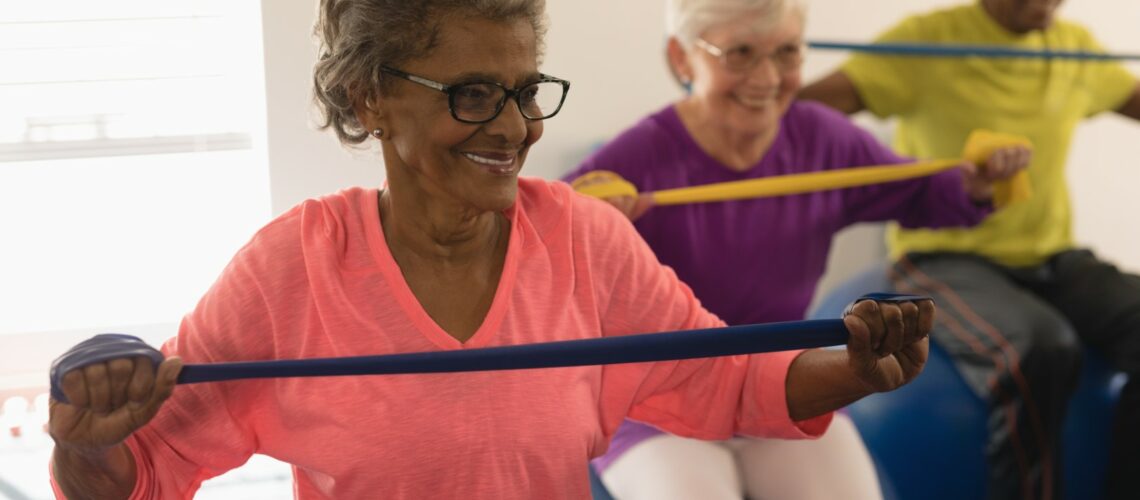As we get older, it is imperative to maintain an active lifestyle. Incorporating regular physical activity into your day is important for overall health and can help seniors maintain mobility, strength, balance, and cognitive function—all while reducing the risk for chronic diseases and improving quality of life. Here are some benefits of staying active as you age as well as tips for incorporating exercise in your everyday life.
Benefits of Physical Activity for Seniors
Incorporating regular exercise into your routine, even in small increments, can yield significant benefits for your health and longevity. Benefits include:
Better physical health: Regular physical activity helps maintain cardiovascular health, muscle strength, flexibility, and balance, reducing the risk of falls and injuries. It also promotes healthy weight management and can lower the risk of chronic conditions such as heart disease, diabetes, and osteoporosis.
Improved cognitive function: Routine exercise has been shown to improve mental sharpness and reduce the risk of cognitive decline and dementia in older adults.
Enhanced mood: Exercise releases endorphins, neurotransmitters that promote feelings of happiness and well-being.
Increased Independence: By improving strength, balance, and flexibility, regular physical activity can help seniors maintain mobility and independence, allowing them to continue performing daily activities and living life to the fullest.
Opportunities for social engagement: Participating in group fitness classes, sports, or recreational activities provides opportunities for social interaction and connection with others, which is essential for mental and emotional well-being, especially in older adults who may be at risk of social isolation.
Tips for Staying Active
Staying active as a senior is vital for maintaining overall health and mobility. Here are some tips to help seniors incorporate exercise into their routine safely and effectively.
Talk to your doctor. It’s always recommended that you consult with your healthcare provider before starting any new exercise program. Your doctor can assess your current health status, provide personalized workout recommendations, and ensure that the exercises you choose are safe and appropriate for you.
Start slow. When beginning any new workout routine, it is important that you take it slow. Pay attention to how your body responds to exercise and adjust as needed. Be mindful of any chronic health conditions or physical limitations and choose exercises that are safe and appropriate for your individual needs. Stay safe by drinking plenty of water and wearing comfortable, supportive shoes and clothing.
Focus on low-impact. Low-impact exercises, like walking, swimming, or cycling are great ways to improve heart health and endurance without putting too much stress on the joints. Similarly, gentle stretching exercises, like Yoga, are great ways to improve flexibility, increase mobility, and reduce the risk of fall-related injuries.
Stay consistent. When it comes to reaping the benefits of exercise, consistency is key. Aim for at least 150 minutes of moderate-intensity aerobic activity per week, spread out over several days. Routine not only improves physical fitness but also helps establish healthy habits that support long-term well-being.
Make it social. Working out in your golden years doesn’t have to be a solitary activity. Make it social and enjoyable by exercising with friends, family, or joining group fitness classes or walking clubs. Exercising with others not only provides motivation and accountability but also adds a social component that enhances overall well-being.
Remember, it’s never too late to start exercising, and even small amounts of physical activity can have significant benefits for seniors. Listen to your body, be patient with yourself, and enjoy the journey to better health and well-being.

